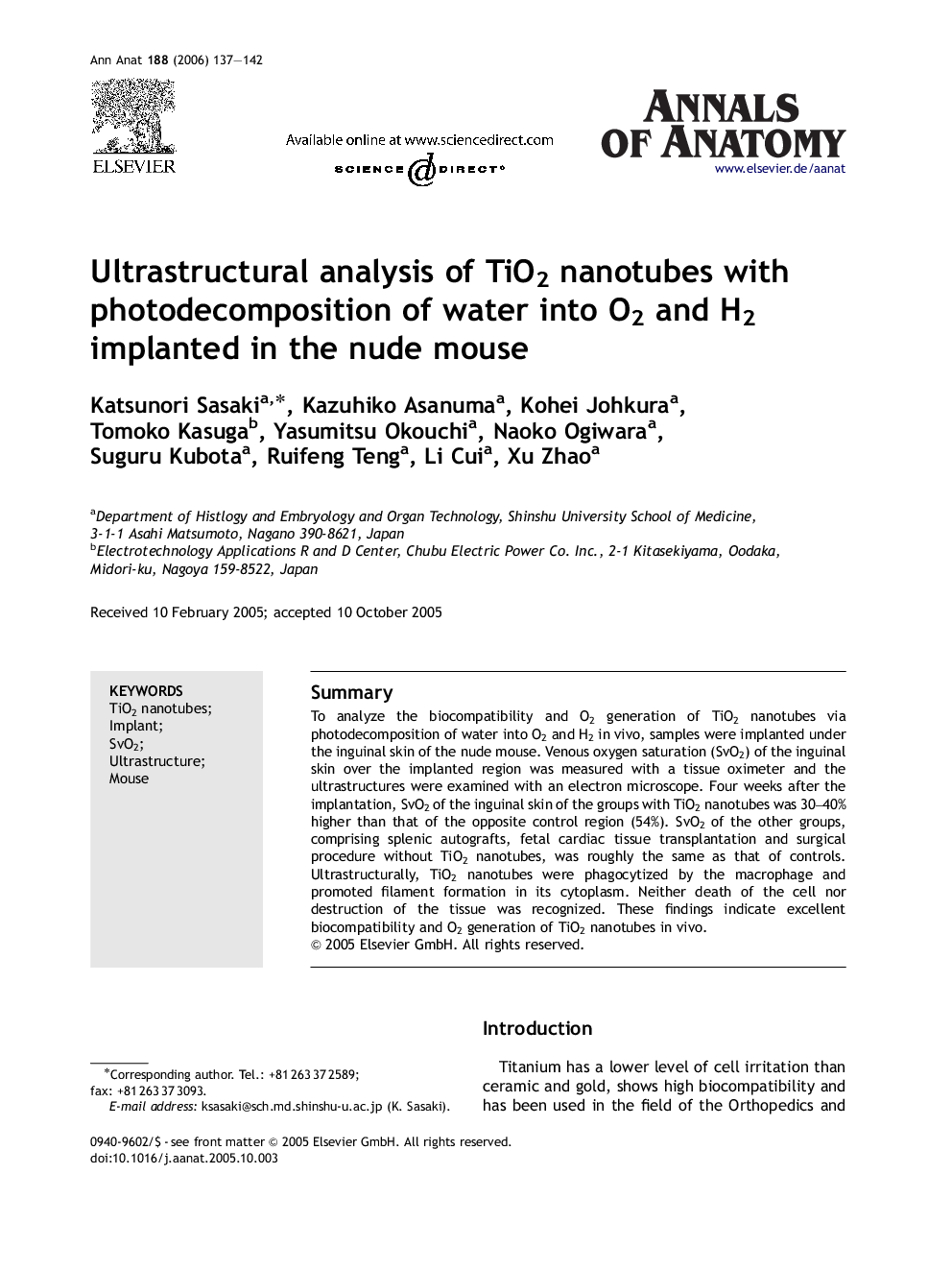| Article ID | Journal | Published Year | Pages | File Type |
|---|---|---|---|---|
| 8463208 | Annals of Anatomy - Anatomischer Anzeiger | 2006 | 6 Pages |
Abstract
To analyze the biocompatibility and O2 generation of TiO2 nanotubes via photodecomposition of water into O2 and H2 in vivo, samples were implanted under the inguinal skin of the nude mouse. Venous oxygen saturation (SvO2) of the inguinal skin over the implanted region was measured with a tissue oximeter and the ultrastructures were examined with an electron microscope. Four weeks after the implantation, SvO2 of the inguinal skin of the groups with TiO2 nanotubes was 30-40% higher than that of the opposite control region (54%). SvO2 of the other groups, comprising splenic autografts, fetal cardiac tissue transplantation and surgical procedure without TiO2 nanotubes, was roughly the same as that of controls. Ultrastructurally, TiO2 nanotubes were phagocytized by the macrophage and promoted filament formation in its cytoplasm. Neither death of the cell nor destruction of the tissue was recognized. These findings indicate excellent biocompatibility and O2 generation of TiO2 nanotubes in vivo.
Related Topics
Life Sciences
Biochemistry, Genetics and Molecular Biology
Cell Biology
Authors
Katsunori Sasaki, Kazuhiko Asanuma, Kohei Johkura, Tomoko Kasuga, Yasumitsu Okouchi, Naoko Ogiwara, Suguru Kubota, Ruifeng Teng, Li Cui, Xu Zhao,
